As one of the many different national and/or ethnic types of traditional Chinese female costumes, the Qipao – alternately known as the Cheongsam – originated as a traditional women’s formal-dress costume within the Manchu ethnic minority. During the early part of the 20th century, the Qipao was also adopted by women in the majority Han Chinese ethnic group, who made a number of alternations to the then-existing Qipao in what, in hindsight, can be said to represent the beginning of the sexual emancipation of the Chinese female, which emancipation would first be achieved with the emergence of the People’s Republic of China, when women gained equality.
The transformed Qipao, having thus become a pan-Chinese costume, was officially designated in 1929 as a Chinese national formal-dress costume for females by the government of the Republic of China (1912-1949), the successor government to the last Imperial dynasty, the Qing (1644-1911) Dynasty.
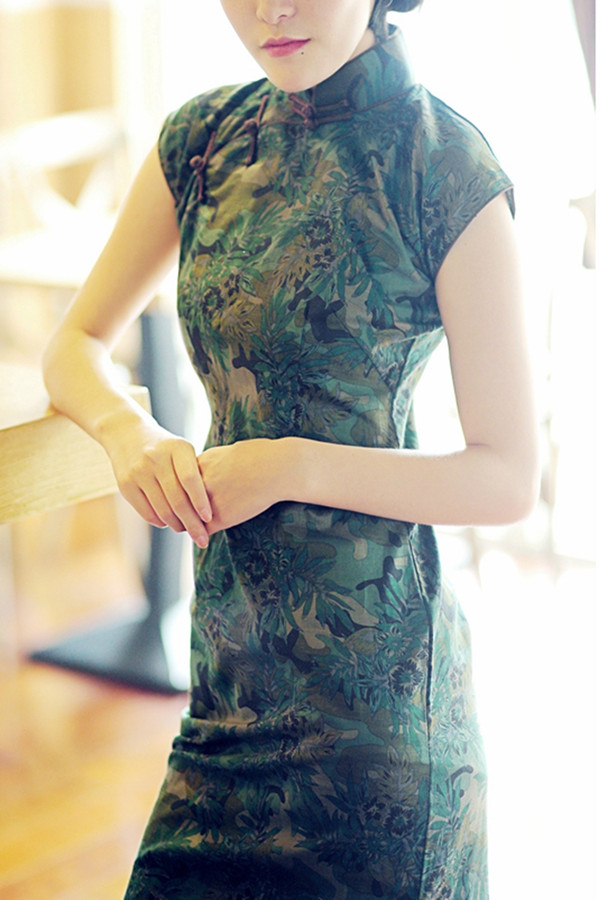
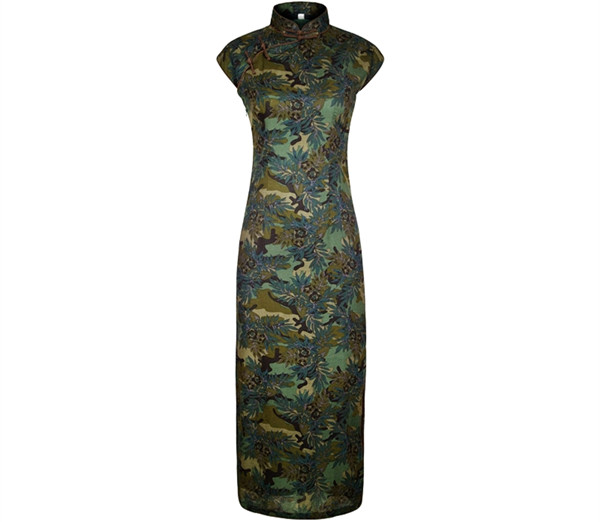
A BRIEF HISTORY OF THE QIPAO
After the founding of the Republic of China in 1912 and the spirit of freedom that this monumental event unleashed, Han Chinese women from the cities of Shanghai and Beijing began to make alternations to the Qipao, gradually transforming what was essentially a standard Manchu costume for females into a formal pan-Chinese costume which would thereafter serve as a symbol for a woman of learned background, irrespective of ethnic heritage. By the time it was approved as a Chinese national formal-dress costume for females in 1929, the Qipao had undergone a number of significant changes that elevated its status as a stylish, yet sedate costume for the Chinese female.
However, after the founding of the People’s Republic of China in 1949, the wearing of the Qipao in mainland China gradually fell into disuse – though it did not disappear entirely, and, in fact, away from the major cities the Qipao was worn frequently – since it was equated with the feudal, hierarchical society of old that, in the view of the government of the PRC, oppressed women. Later, during the Cultural Revolution (1966-76), the wearing of the Qipao in mainland China all but disappeared, as it was considered an unacceptable bourgeois symbol.
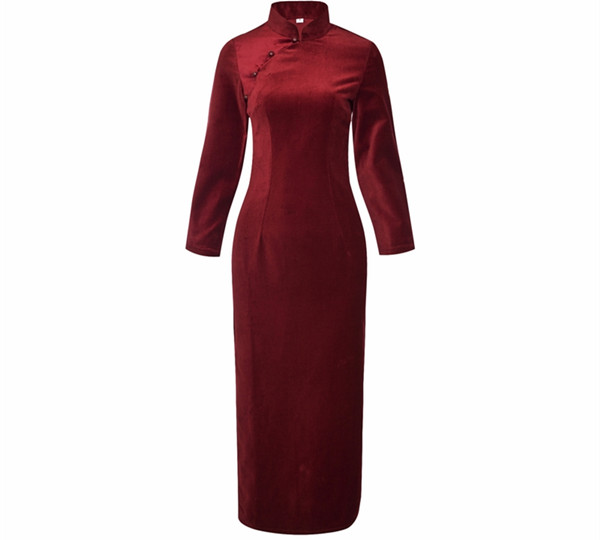
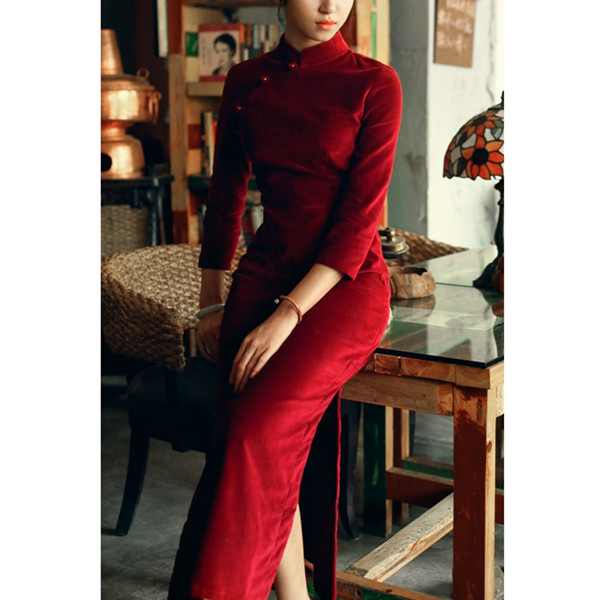
Fortunately, with the advent of the reform period of Deng Xiaoping in the 1980s, and the opening up of China as a result of the visit to China by the U.S. president, President Richard Nixon, the Qipao made a gradual comeback, being re-considered, as it were, as one of the exceptional representatives of traditional Chinese formal-dress costumes.
On the Chinese island of Taiwan, on the other hand, the Qipao continued uninterruptedly to enjoy popularity as a traditional Chinese formal dress for women, and is still very popular throughout Taiwan, though today one sees Western-inspired female formal dress on Taiwan as often as one sees traditional Chinese models of formal dress, such as the Qipao.
In Hongkong, a girl’s school-uniform version of the Qipao that stems from the early 20th century transformation of the Qipao into a pan-Chinese dress costume for females continues in an unbroken chain to this day, i.e., ., it is a 100-year-old tradition that still thrives in Hongkong.
Moreover, the Qipao continued – and, indeed, continues – to thrive as a beautiful, traditional Chinese formal-dress costume for women among the Chinese diaspora the world over.
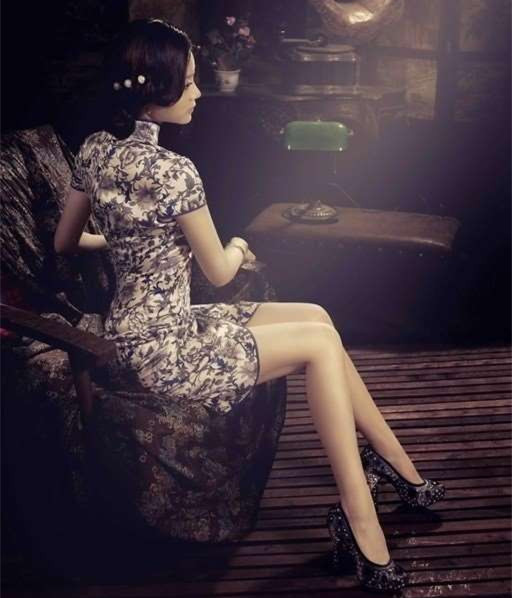
THE SALIENT FEATURES OF THE QIPAO AND HOW THEY EVOLVED
The Salient Features Of The Qipao
The elegant Qipao is characterized by a stand-up collar (this is a general feature of Chinese dress, i.e., it is a feature that often applies to both male and female dress), a tight waist design (as can be understood, not all women can fit into the Qipao!), and buttons made of silk or cloth. Additionally, the Qipao is slit on either side, exposing glimpses of the legs during movement.
Other features of the Qipao that are optional (do not apply to all Qipao styles) are that the dress either extends to just above the feet (the most traditional style) or to just below the knees, that it has long sleeves (the most traditional style) or short sleeves. These modern options, though they may not please traditionalists, have ensured that the Qipao remains popular.
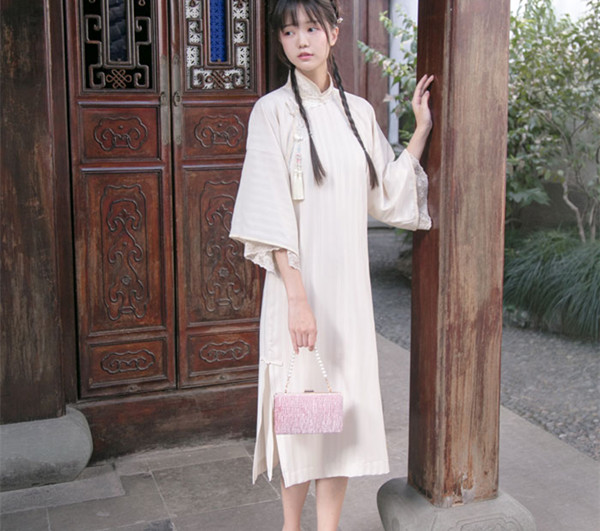
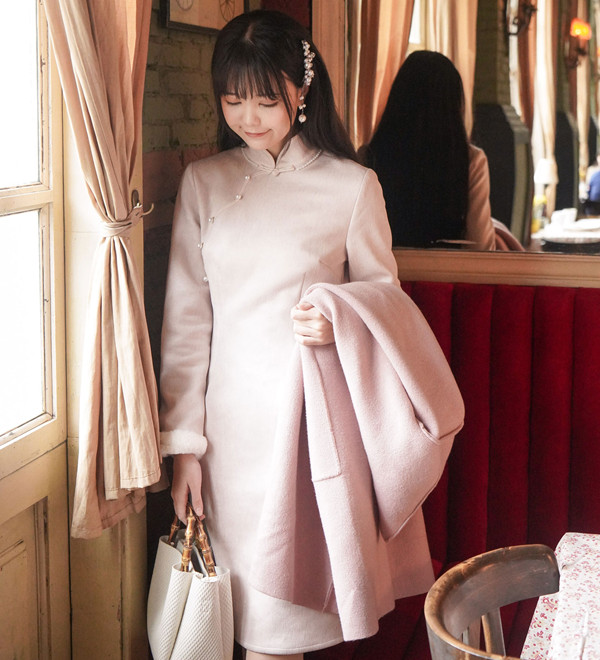
The Development Of The Styles Of Qipao
As a result of over a thousand years of deeply-rooted cultural mores of Imperial era feudal China, a woman’s dress was not allowed to reveal her figure; all was straight, vertical lines that concealed the bosom, the waist and the hips. It was a strict taboo for a woman to wear any form of dress that even hinted at her actual shape. This began to change toward the end of the Qing Dynasty and the beginning of the post-Imperial period immediatly following, i.e.., the period of the Republic of China.
This change was gradually ushered in during a period of much social upheaval in China as a result of widespread contact with Western culture, to which China responded alternatingly with acceptance and rejection, in a ‘two steps forward and one step backward’ fashion. At the beginning of the 20th century in China, lined, short gowns with loose, broad sleeves – over which a long, sleeveless waistcoat (think of a vest) was worn – were quite popular among Chinese women.
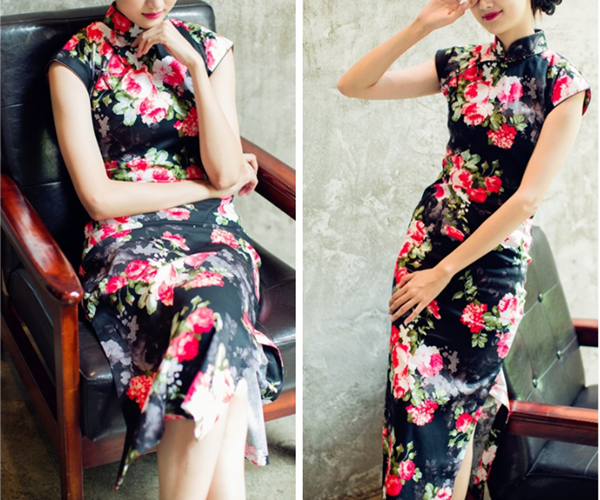
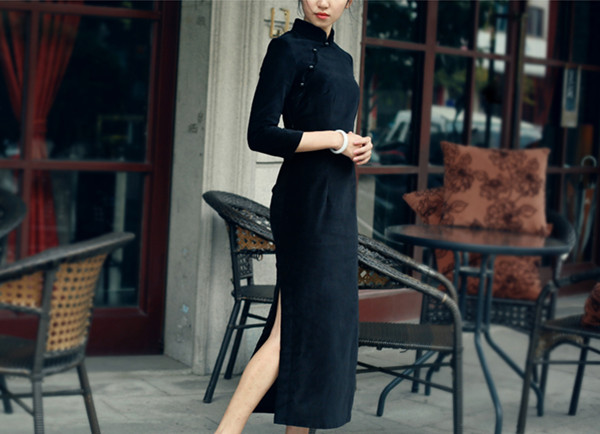
It was at this time that the Chinese female began to alter her clothing in subtle ways that suggested the beauty of her curvature. Using the traditional Qipao, certain alternations were made to the sleeves, the collar and the borders, with adornments added at the same time. These small stylistic changes added up, over the space of 10-15 years, to rather complex changes to the original Qipao, subtly suggesting the female form underneath, yet somehow this classic Chinese dress, with its Manchu ethnic origins, managed to retain an air of austerity about it – especially its broad shoulders, its upright collar and its vertical lines in general – which formal features no doubt helped it to gain official recognition by the government of the Republic of China in 1929.